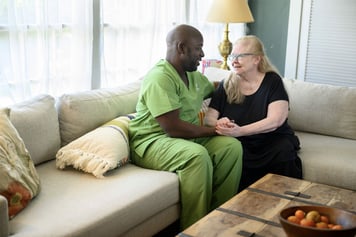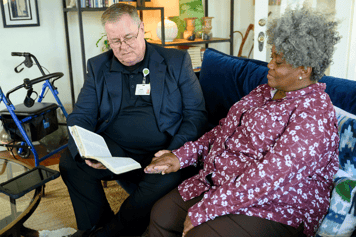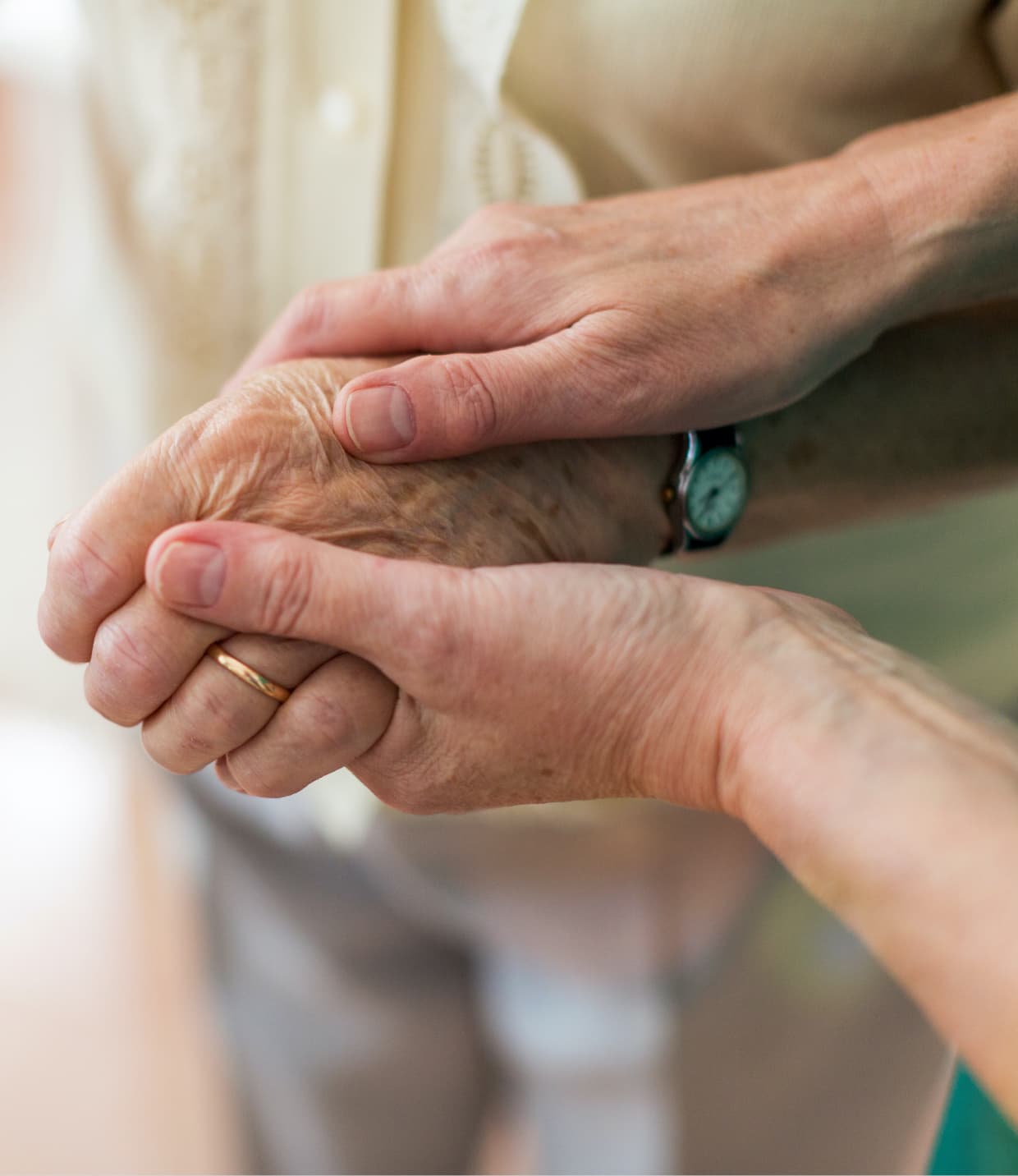Hospice care provides comfort and high-quality care in the last months of life. Hospice is an approach to care, not a place. You can get hospice care wherever you or your loved one calls home. Research shows:
- More than half of patients receive hospice care at home.
- Another 41.9% get hospice care in a nursing home or facility, such as a skilled nursing facility or assisted living.
- A small percentage receives inpatient hospice care in a hospital, hospice center or other setting.
In Home Hospice Care
Most of the time patients receive hospice care at home. Home hospice offers safety, comfort and the ability to be surrounded by loved ones. The hospice care team will make visits to make sure your loved one is comfortable and their symptoms are under control. The team provides nursing care and help with tasks like bathing and dressing. Patients can also see a spiritual counselor and get help with advanced care planning from a social worker. The care plan is tailored to your loved one’s needs as well as yours. The hospice team may recommend medical equipment or supplies, which can be paid by Medicare if they’re related to the terminal illness.
Most day-to-day care is provided by a family member, friend or caregiver. The hospice team helps educate and train you and provides support to make your job easier. If an urgent need arises, you can contact the on-call hospice team member 24 hours a day, seven days a week.
Hospice Care in a Nursing Home/Long-Term Care Facility
People can also receive hospice in a nursing home, assisted living or skilled nursing facility. The hospice agency visits and provides specialized hospice services. The rest of the patient’s day-to-day care is provided by the facility staff. There are also facilities that have their own hospice units with nursing staff to care for hospice patients.
There are several reasons a patient may receive hospice care in a nursing home or facility rather than home hospice. For example:
- They have complex needs or uncontrolled pain that isn’t responding to home hospice care.
- They don’t have family members, friends or a professional caregiver who can provide their day-to-day care.
- Their caregiver is unavailable, often due to sickness, exhaustion, injury or surgery.
- They prefer to die in a setting other than home, often for cultural reasons or personal preferences.
Hospice Center
For patients who can’t stay home, some hospice programs have their own hospice facilities. They may also have arrangements with freestanding hospice houses, hospitals or inpatient residential centers.
Hospice centers provide hospice care in a comfortable setting. Patients live in a home-like environment where they receive short-term hospice care. A hospice center is a good choice when the patient:
- Needs 24/7 care for a short period of time
- Needs more help with symptom management
- Doesn’t have a caregiver at home who can provide the care needed
- Needs respite care to provide relief for their caregiver
Hospice Care in the Hospital
Some hospitals have special hospice units. Some have hospice teams that visit patients on any nursing unit. Others have hospice services provided by an outside hospice agency. Hospice in the hospital helps with symptoms that can’t be managed at home or in a nursing home. The goal is to get symptoms under control so the patient can go back to home hospice or to a facility.
If you’d like to learn more about hospice, contact your doctor, hospital social worker or discharge planner. You can also call your local Amedisys hospice care center to learn more about your options.





